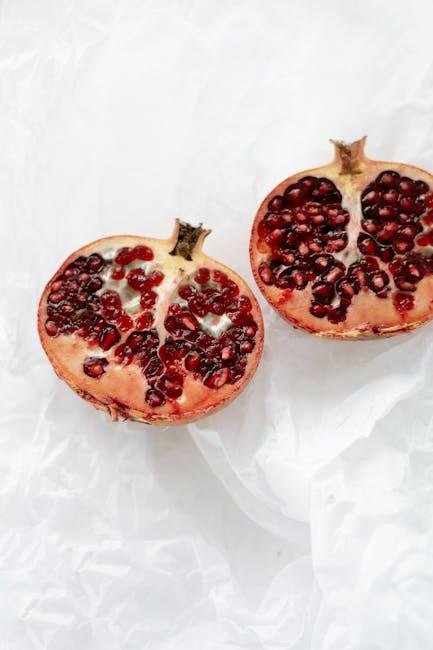In a world where food choices often spark passionate debates, plant-based eating stands at the crossroads of culture, health, and sustainability. Yet, despite its growing popularity, this way of eating is often shrouded in misconceptions that cloud understanding and dampen curiosity. From fears of missing out on essential nutrients to assumptions about taste and satisfaction, myths about plant-based diets persist like shadows in the culinary landscape. This article peels back those layers of misunderstanding, inviting readers to explore the facts behind the folklore and discover what plant-based eating truly entails—beyond the myths that so often precede it.
Table of Contents
- Common Misconceptions About Nutritional Completeness in Plant-Based Diets
- Debunking the Myth of Protein Deficiency in Plant-Powered Nutrition
- Understanding the Environmental Impact Beyond the Surface
- Addressing Concerns About Cost and Accessibility of Plant-Based Foods
- Navigating Social Challenges and Cultural Perceptions
- Practical Tips for Transitioning to a Balanced and Enjoyable Plant-Based Lifestyle
- Q&A
- In Conclusion

Common Misconceptions About Nutritional Completeness in Plant-Based Diets
Many people mistakenly believe that plant-based diets inherently lack essential nutrients, leading to deficiencies that can only be corrected by consuming animal products. However, with thoughtful planning, a diet centered around fruits, vegetables, legumes, nuts, and grains can be nutritionally complete. The key lies in understanding which plant foods provide vital nutrients such as protein, iron, calcium, vitamin B12, and omega-3 fatty acids, and how to combine them effectively. For example, combining legumes and grains ensures a full amino acid profile, countering the myth that plant proteins are incomplete.
Another widespread misconception is that plant-based diets are automatically low in calories and unable to support active lifestyles or muscle building. On the contrary, many athletes and bodybuilders thrive on plant-based nutrition by emphasizing calorie-dense foods and balanced macronutrients. The table below highlights some powerful plant-based nutrient sources demonstrating the richness and variety these diets can offer:
| Nutrient | Plant Source | Benefits |
|---|---|---|
| Protein | Lentils, Quinoa | Complete amino acids for muscle repair |
| Iron | Spinach, Chickpeas | Supports oxygen transport in blood |
| Calcium | Broccoli, Almonds | Bone health and nerve function |
| Vitamin B12 | Fortified Plant Milks, Nutritional Yeast | Critical for nerve and brain health |
| Omega-3 | Flaxseeds, Walnuts | Supports heart and brain health |
Debunking the Myth of Protein Deficiency in Plant-Powered Nutrition
One of the most persistent misconceptions about plant-based diets is that they inherently lack sufficient protein. Yet, this couldn’t be further from the truth. Plants such as lentils, chickpeas, quinoa, tofu, and tempeh are not only rich in protein but also contain a diverse amino acid profile essential for muscle repair and overall health. Unlike animal proteins, plant-based sources often provide fiber, antioxidants, and phytonutrients, contributing to a more holistic nutritional intake without the added saturated fats or cholesterol.
Understanding the protein content and quality in various plant foods is key to busting this myth. Consider the following high-protein plant options:
- Legumes: Beans, lentils, and peas with 15-18g of protein per cooked cup
- Whole grains: Quinoa and farro, offering 8-9g of protein per cooked cup
- Nuts and Seeds: Almonds, chia seeds, and hemp seeds, ranging from 4-9g of protein per ounce
| Plant-Based Food | Protein per Serving | Additional Benefits |
|---|---|---|
| Tofu (1/2 cup) | 10g | Rich in calcium & iron |
| Lentils (1 cup cooked) | 18g | High fiber & folate |
| Quinoa (1 cup cooked) | 8g | Complete protein & magnesium |
With thoughtful meal planning, combining different plant proteins throughout the day easily meets or surpasses daily protein needs. This reinforces the truth: protein deficiency is far from an inevitable outcome of choosing a plant-powered lifestyle.
Understanding the Environmental Impact Beyond the Surface
While adopting a plant-based diet often comes with praise for its environmental benefits, it’s critical to look deeper than the surface-level assumptions. The environmental footprint of plant-based foods varies dramatically depending on how and where they are produced. For example, some crops require intensive irrigation and may contribute to soil degradation or water scarcity in vulnerable regions. Additionally, transportation emissions from air-freighted exotic produce can offset some of the gains made by shifting away from animal products.
To truly understand the ecological trade-offs, consider these factors:
- Water Usage: Almonds vs. local leafy greens
- Land Impact: Monoculture farming vs. diverse crop rotation
- Carbon Footprint: Seasonal vs. out-of-season produce
| Plant-Based Food | Average Water Use (liters/kg) | Carbon Emissions (kg CO2-eq/kg) |
|---|---|---|
| Almonds | 10,000 | 2.3 |
| Tomatoes (local, seasonal) | 214 | 0.4 |
| Quinoa (imported) | 1,350 | 1.5 |
This data highlights the importance of making informed decisions within plant-based eating. Supporting local agriculture, favoring seasonal produce, and minimizing food waste can significantly enhance the sustainability of a plant-centered lifestyle, proving that environmental impact goes far beyond just the label “plant-based.”
Addressing Concerns About Cost and Accessibility of Plant-Based Foods
While plant-based foods are often perceived as a luxury or specialty item, the reality is that they can fit into any budget with a little planning and creativity. Staples such as beans, lentils, rice, potatoes, and seasonal vegetables provide affordable nutrition and form the backbone of many traditional diets worldwide. By focusing on whole foods and minimizing processed alternatives, it’s possible to create satisfying, wholesome meals without overspending. Remember, shopping at local markets, buying in bulk, and choosing frozen or canned options can significantly reduce costs without compromising quality or taste.
Accessibility is another common barrier, but it’s steadily improving as the demand for plant-based options grows. Many mainstream grocery stores now carry a wide selection of fruits, vegetables, grains, and plant-based proteins. Community-supported agriculture (CSA) programs and farmers’ markets also offer fresh, affordable choices. Here are some practical tips to enhance accessibility:
- Plan meals around seasonal produce to ensure freshness and lower prices.
- Experiment with pantry staples like chickpeas and oats for snack and meal options.
- Use versatile plant proteins like tofu and tempeh, which can be found in most supermarkets.
| Cost-Saving Tip | Example | Benefits |
|---|---|---|
| Buy in Bulk | Purchase dried beans and grains in large quantities | Lower unit price and reduced packaging waste |
| Choose Frozen Fruits & Veggies | Frozen spinach or berries | Extended shelf life and nutrient retention |
| Cook from Scratch | Make your own plant-based sauces or snacks | Cut down on processed food costs |
Navigating Social Challenges and Cultural Perceptions
Adopting a plant-based lifestyle often means stepping into a world where social norms can feel like unexpected hurdles. Many individuals encounter the classic scenario of dining with family or friends and facing puzzled looks or unsolicited comments. This experience isn’t just about food preferences; it highlights the deep-rooted cultural values attached to eating habits. Often, plant-based eating is mistakenly seen as restrictive or radical, when, in reality, it’s a vibrant choice that celebrates variety and innovation in culinary traditions. Embracing these differences with patience and openness creates opportunities for dialogue and understanding, helping to dispel outdated beliefs about what a meal should look like or include.
- Myth: Plant-based diets lack protein.
- Reality: Including legumes, nuts, seeds, and whole grains provides ample protein for all dietary needs.
- Myth: Plant-based foods are bland and boring.
- Reality: Diverse spices, cooking techniques, and global cuisines offer exciting flavors.
| Challenge | Common Perception | Positive Reframe |
|---|---|---|
| Family Gatherings | “Why don’t you eat meat with us?” | An opportunity to introduce delicious plant-based dishes everyone can enjoy. |
| Social Events | “Plant-based means missing out.” | Shows creativity in cooking and expands palate experiences. |
| Cultural Traditions | “It’s not real food without animal products.” | Reflects evolving food ethics and environmental awareness. |
Practical Tips for Transitioning to a Balanced and Enjoyable Plant-Based Lifestyle
Transitioning to a plant-based lifestyle doesn’t mean overnight extremes or giving up all your favorite foods. Start small by incorporating more fruits, vegetables, whole grains, and legumes into your daily meals. Focus on diversity and balance rather than perfection. Try batch cooking to prepare plant-based meals in advance, making busy days simpler and reducing the temptation to revert to old habits. Remember, a well-rounded plate combines protein, healthy fats, and complex carbohydrates to keep energy levels steady and cravings at bay.
To make the shift enjoyable and sustainable, embrace flavors and textures that excite your palate. Experiment with herbs, spices, and new cooking techniques to keep your meals interesting. Consider keeping a list of go-to quick meals, such as:
- Chickpea curry with brown rice
- Sweet potato and black bean tacos
- Veggie stir-fry with tofu and quinoa
Below is a simple chart to help balance your daily plant-based plate for optimal nutrition:
| Food Group | Suggested Portion | Examples |
|---|---|---|
| Proteins | 1/4 plate | Lentils, tofu, tempeh, beans |
| Vegetables | 1/2 plate | Broccoli, spinach, carrots, peppers |
| Complex Carbohydrates | 1/4 plate | Quinoa, brown rice, sweet potatoes |
Q&A
Q&A:
Q1: Is it true that a plant-based diet can’t provide enough protein?
A: This is one of the biggest myths about plant-based eating. Plants like beans, lentils, tofu, quinoa, nuts, and seeds are excellent sources of protein. When you eat a varied diet, you easily meet your protein needs without relying on animal products.
Q2: Will switching to plant-based food leave me constantly hungry?
A: Not at all. Plant-based meals, when balanced with fiber-rich veggies, whole grains, and healthy fats, can be incredibly filling. Fiber slows digestion, promotes fullness, and helps regulate blood sugar levels, keeping hunger at bay.
Q3: Does plant-based eating mean expensive specialty foods?
A: While specialty vegan products exist, a plant-based diet can be budget-friendly. Staples like beans, rice, seasonal vegetables, and fruits are often affordable and widely available. Planning and cooking at home can lower costs even more.
Q4: Can plant-based diets lead to nutrient deficiencies?
A: Like any diet, it requires mindful planning. Nutrients like vitamin B12, iron, and omega-3s are important to monitor, but supplements and fortified foods can bridge gaps. Many athletes and health experts thrive on plant-based diets with proper nutritional awareness.
Q5: Are plant-based diets only for environmentalists or vegans?
A: Not at all. People choose plant-based eating for diverse reasons including health, culture, taste preferences, and ethics. It’s a flexible approach adaptable to different lifestyles and beliefs, ranging from fully vegan to mostly plant-focused.
Q6: Will I miss my favorite comfort foods on a plant-based diet?
A: Thanks to the surge in plant-based recipes and innovations, comfort foods are easier than ever to recreate in vegan versions. From creamy mac and cheese to hearty burgers, plant-based doesn’t mean giving up flavor or satisfaction.
Q7: Is plant-based eating just a passing trend?
A: Plant-based eating has deep roots in human history and cultures worldwide. Its growing popularity today reflects increasing awareness about health, sustainability, and animal welfare, signaling a lasting shift rather than a fleeting fad.
In Conclusion
As we peel back the layers of misconception surrounding plant-based eating, it becomes clear that many of these myths sprout from half-truths and outdated ideas. Embracing a plant-based lifestyle doesn’t mean sacrificing flavor, nutrition, or variety—it’s an invitation to explore the rich tapestry of foods nature has to offer. Whether you’re a curious newcomer or a seasoned herbivore, understanding the facts can help you make choices that nourish both body and planet. So the next time a myth tries to take root, remember: truth is the best fertilizer for a healthy, vibrant diet.

